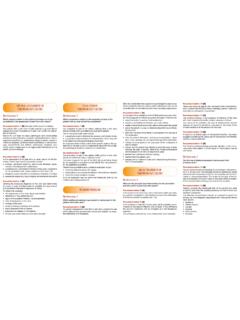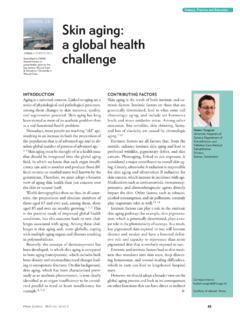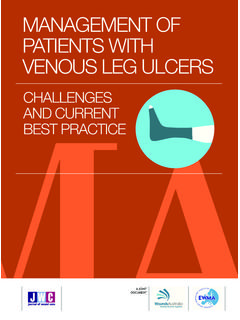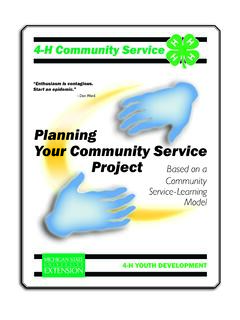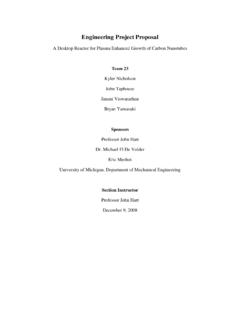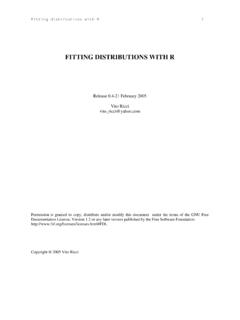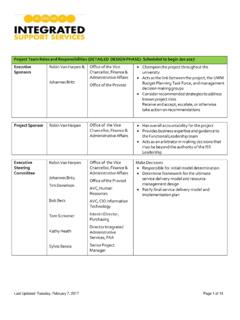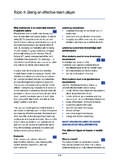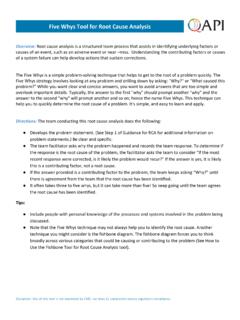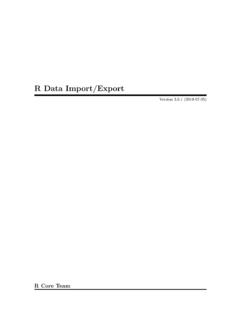Transcription of Exploring the concept of a team approach to wound care ...
1 MANAGING WOUNDS AS A TEAME xploring the concept of a team approach to wound care AAWCA joint position documentS2 JOURNAL OF wound CARE VOL 23 NO 5 AAWC/AWMA/EWMA DOCUMENT 2014 EWMA 2014 All rights reserved. No reproduction, transmission or copying of this publication is allowed without written permission. No part of this publication may be reproduced, stored in a retrieval system, or transmitted in any form or by any means, mechanical, electronic, photocopying, recording, or otherwise, without the prior written permission of the European wound Management Association (EWMA) or in accordance with the relevant copyright the editor, MA Healthcare Ltd.
2 And EWMA have taken great care to ensure accuracy, neither MA Healthcare Ltd. nor EWMA will be liable for any errors of omission or inaccuracies in this on behalf of EWMA by MA Healthcare : Anthony Kerr Editor: Karina Huynh Designer: Milly McCulloch Published by: MA Healthcare Ltd, St Jude s Church, Dulwich Road, London, SE24 0PB, UKTel: +44 (0)20 7738 5454 Email: Web: Moore,1 (Editor) PhD, MSc, FFNMRCSI, PG Dip, Dip Management, RGN, Professor, Head of School, Chair of the document Author Group; Former President, European wound Management Association,Gillian Butcher,2 B App Sc (Pod), Adv Dip Bus Mgmt, Senior Podiatry Manager.
3 Australian wound Management Association, Lisa Q. Corbett,3 MSN, APRN, DNPc, CWOCN, Nurse Practitioner wound Care; Association for the Advancement of wound Care,William McGuiness,4 PhD, MSN, Associate Professor; Australian wound Management Association, Robert J. Snyder,5 DPM, MSc, CWS Professor and Director of Clinical Research; President, Association for the Advancement of wound Care, Kristien van Acker,6 Md , PhD Diabetologist; European wound Management Association, Chair International Working Group on the Diabetic Foot, Chair Consultative Section Diabetic Foot of the International Diabetes Federation (IDF)1 School of Nursing & Midwifery, Royal College of Surgeons in Ireland, 123 St Stephens Green, Dublin 2, Ireland;2 Monash Health, 246 Clayton Rd, Clayton VIC 3168, Australia.
4 3 Hartford HealthCare, Hartford CT and Yale University School of Nursing, New Haven, CT, USA;4 La Trobe University, Alfred Health Clinical School, Level 4, The Alfred Centre, 99 Commercial Road, Prahran VIC 3181, Australia;5 Barry University, 11300 NE 2nd Avenue, Miami Shores, FL 33161, USA;6 Hospital H Familie, Rumst and Centre de Sant des Fagnes- Chimay, support and coordination: EWMA SecretariatCorresponding author: Editor, Professor Zena Moore The document is supported by an unrestricted grant from BSN Medical, Flen Pharma, KCI, Lohmann & Rauscher and article has not undergone double-blind peer review;This article should be referenced as: Moore, Z.
5 , Butcher, G., Corbett, L. Q., et al. AAWC, AWMA, EWMA Position Paper: Managing Wounds as a team . J wound Care 2014; 23 (5 Suppl.): S1 OF wound CARE VOL 23 NO 5 AAWC/AWMA/EWMA DOCUMENT 2014 S3 ContentsAbstract 4 Introduction 5 project aim 5 project objectives 5 Overview of the document 6 The problem of wounds 7 Teamwork a historical overview 7 Definition of commonly used terms 8 The definitions as they apply to wound care 9 Clinical evidence for managing wounds as a team 11 Introduction 11 Literature search outcomes 11A team approach in wound care methods of included studies 11A team approach in wound care study populations 13A team approach in wound care care settings 13A team approach in
6 wound care team interventions 14A team approach in wound care primary outcomes measures 16A team approach in wound care- secondary outcomes 16A team approach in wound care methodological issues within studies 17 Summary 17 Barriers & facilitators 19 The will of participating clinicians 19 The pragmatics of service delivery 22 Determining client need 22 team location 22 team communication 23 Accessing the medical record 24 Clinician remuneration 24 Reported changes to the cost-benefit ratios 25 Conclusions 25 Universal model for the team approach to wound care 26 Summary 31 Summary and conclusion 32 References 34S4 JOURNAL OF wound CARE VOL 23 NO 5 AAWC/AWMA/EWMA DOCUMENT 2014 AbstractBackgroundThe growing prevalence and incidence of non-healing acute and chronic wounds is a worrying concern.
7 A major challenge is the lack of united services aimed at addressing the complex needs of individuals with wounds. However, the WHO argues that interprofessional collaboration in education and practice is key to providing the best patient care, enhancing clinical and health-related outcomes and strengthening the health is based on this background that the team approach to wound care project was conceptualised. The project was jointly initiated and realised by the Association for the Advancement of wound Care (AAWC-USA), the Australian wound Management Association (AWMA) and the European wound Management Association (EWMA).
8 AimThe aim of this project was to develop a universal model for the adoption of a team approach to wound care. ObjectiveThe overarching objective of this project was to provide recommendations for implementing a team approach to wound care within all clinical settings and through this to develop a model for advocating the team approach toward decision makers in national government integrative literature review was conducted. Using this knowledge, the authors arrived at a consensus on the most appropriate model to adopt and realise a team approach to wound four articles met the inclusion criteria.
9 Following data extraction, it was evident that none of the articles provided a definition for the terms multidisciplinary, interdisciplinary or transdisciplinary in the context of wound care. Given this lack of clarity within the wound care literature, the authors have here developed a Universal Model for the team approach to wound Care to fill this gap in our current understanding. ConclusionWe advocate that the patient should be at the heart of all decision-making, as working with the Universal Model for the team approach to wound Care begins with the needs of the patient. To facilitate this, we suggest use of a wound navigator who acts as an advocate for the patient.
10 Overall, we feel that the guidance provided within this document serves to illuminate the importance of a team approach to wound care, in addition to providing a clear model on how to achieve such an approach to care. We look forward to gathering evidence of the impact of this model of care on clinical and financial outcomes and will continue to share updates over OF wound CARE VOL 23 NO 5 AAWC/AWMA/EWMA DOCUMENT 2014 S5 IntroductionChanging population demographics resulting in an increased prevalence and incidence of multisystem chronic diseases means that health care services are continuously challenged to provide increasingly complex interventions with limited resources.
